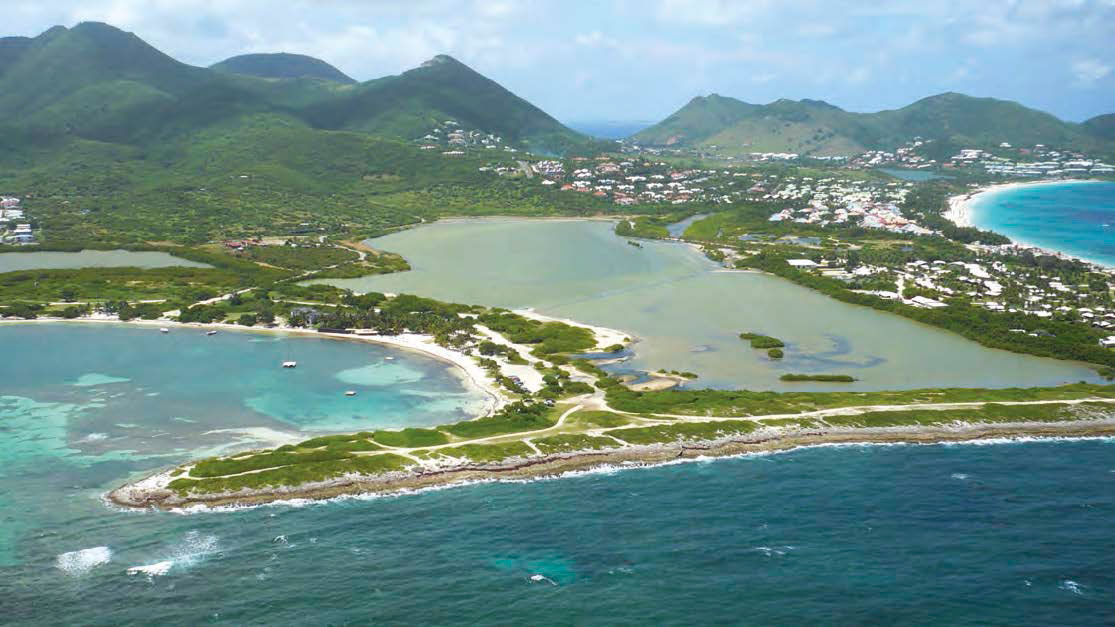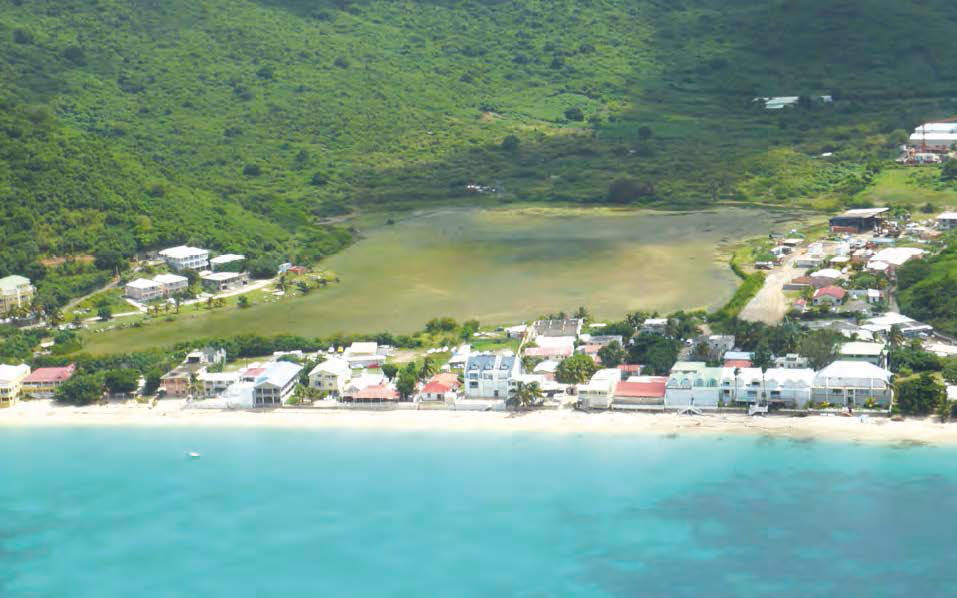The treatment of gray water in Saint Martin is not properly handled in certain sectors, and the Établissement des Eaux et de l’Assainissement (EEASM), along with the Collectivité, has put the construction of new water treatment plants at the top of its list of priorities. Two such stations, one in French Quarter and the other at La Savane, are under construction. The Réserve remains vigilant, as these two stations are along the edge of salt ponds: the first at the Etang aux Poissons; the second at the Etang de La Savane, and both sites are protected by the Conservatoire du Littoral. An impact study was done, levels of acceptable discharge were set, and the compensatory measures accepted by the EEASM will be implemented : monitoring of the water quality in the ponds; integration of the water treatment stations into the landscape; replanting of vegetation around the sites; installation of facilities for the public, for example, a bird observatory.
On the northern side of the island, where gray water currently runs into the Étang aux Poissons without being treated at all, the water treatment plant project for French Quarter —where gray water from Mont Vernon, Orient Bay and French Quarter will be treated— should be completed before the end of 2020, as it has access to European Funds to help with financing. The work will begin in 2015 in order to respect the timetable, and at completion will comprise underground installation of miles of pipes, including those in protected zones. Some legal procedures are necessary in terms of land use, and the Réserve Naturelle, like the Conservatoire du Littoral, are working to facilitate the process: a temporary agreement to rightfully use the land and the reduction of pollution that flows into the ponds steps in the right direction toward the protection of these fragile areas.
At La Savane, as part of the construction of a new school complex and the treatment of its gray water, several pieces of land around the pond have been the site of illegal construction for many years, and the only solution to install the pipes for the future water treatment plant without destroying the homes would be to pass them by way of the pond. But how? The ingenious solution found by the EEASM and the Réserve will consist of installing a wooden walkway under which the pipes will be attached. This pretty walkway will have a double advantage, as it will also allow students from Grand Case to get to class without walking on the road.


















